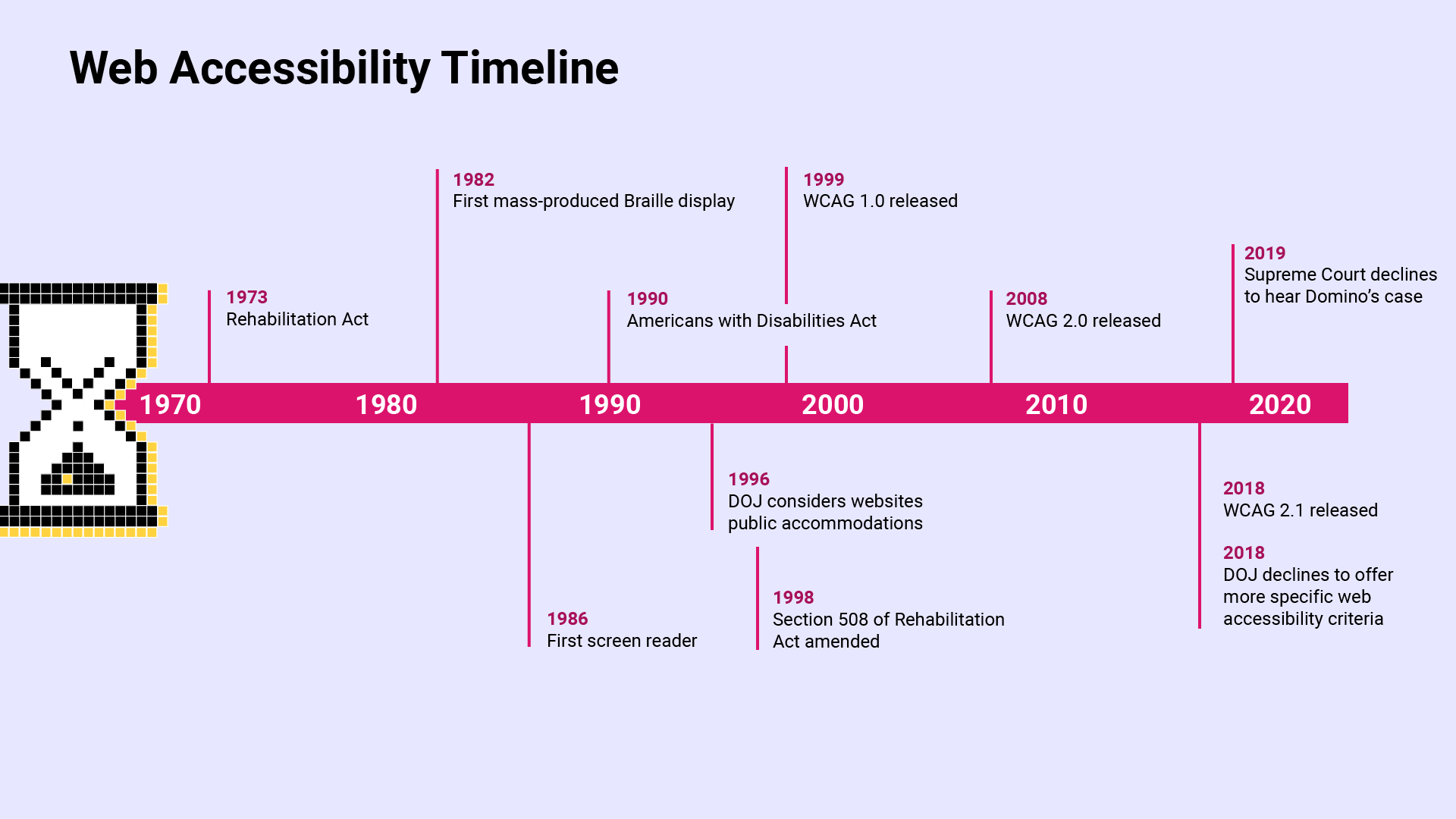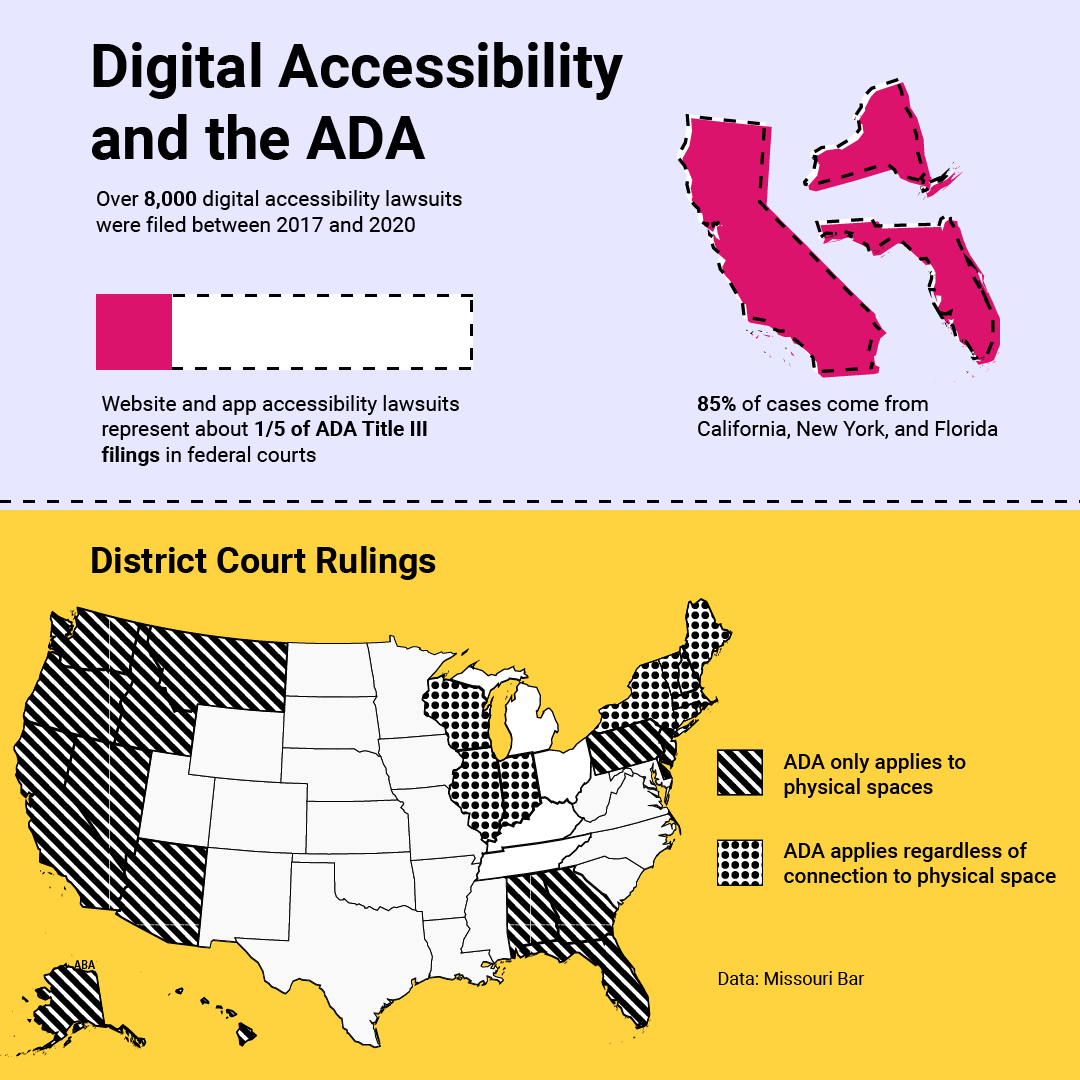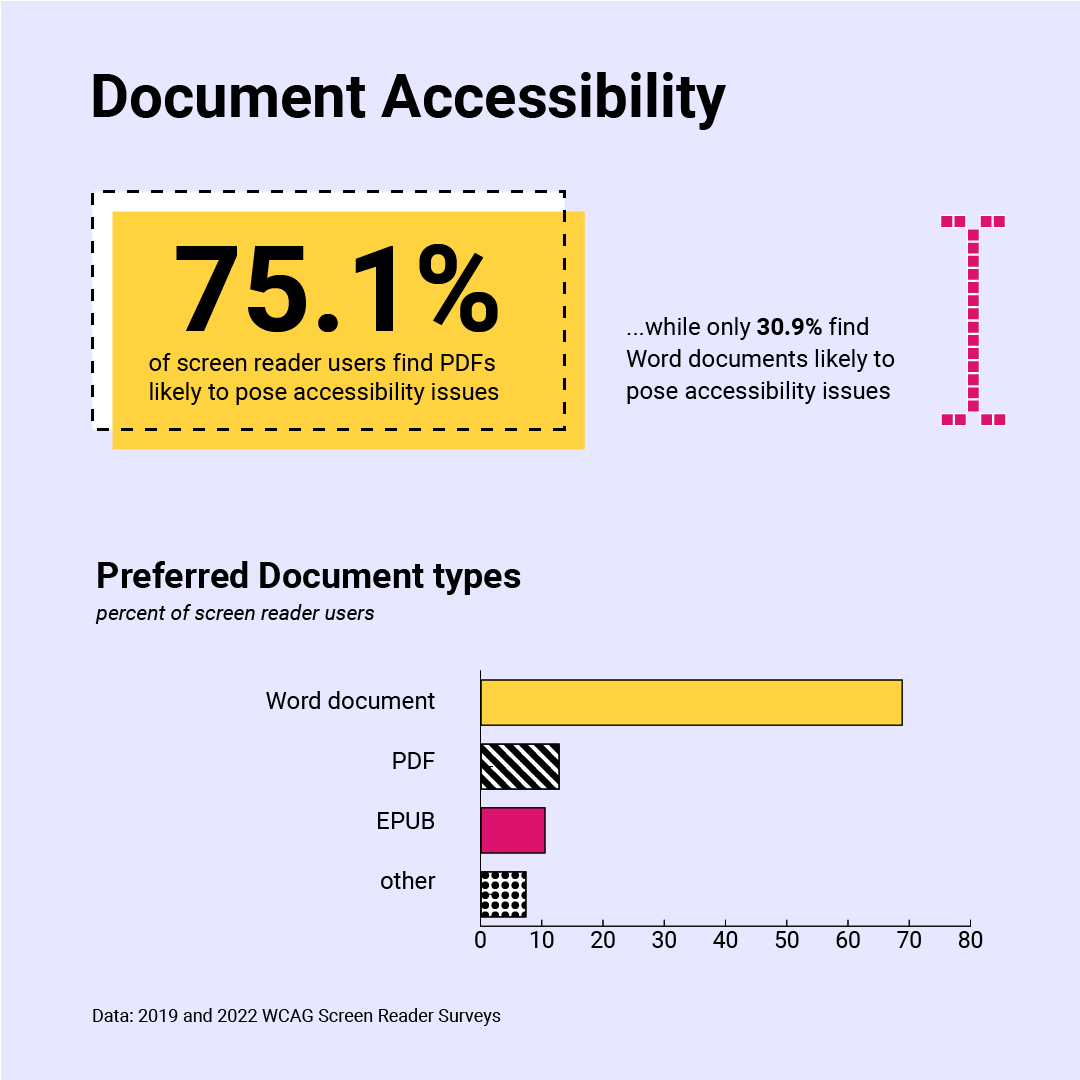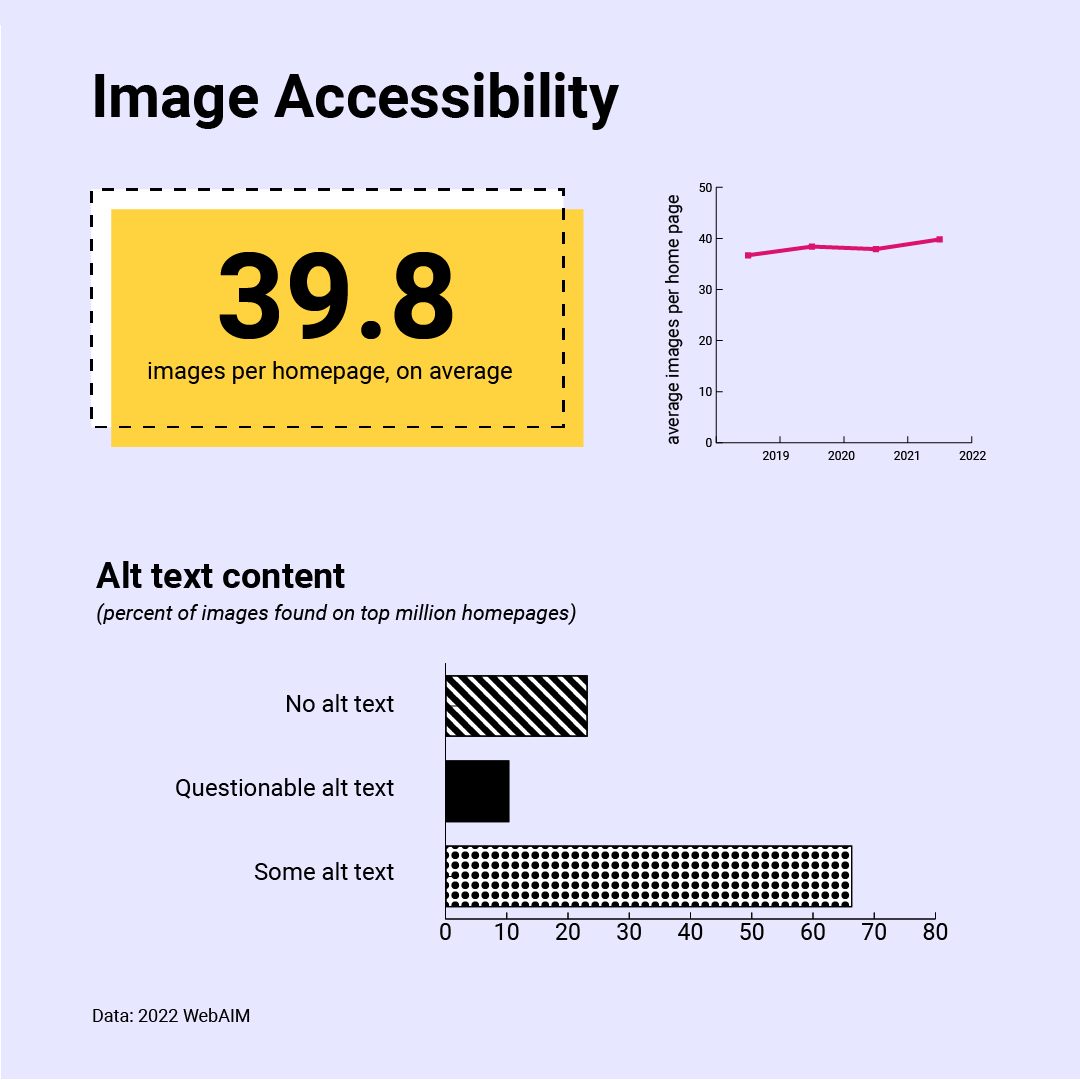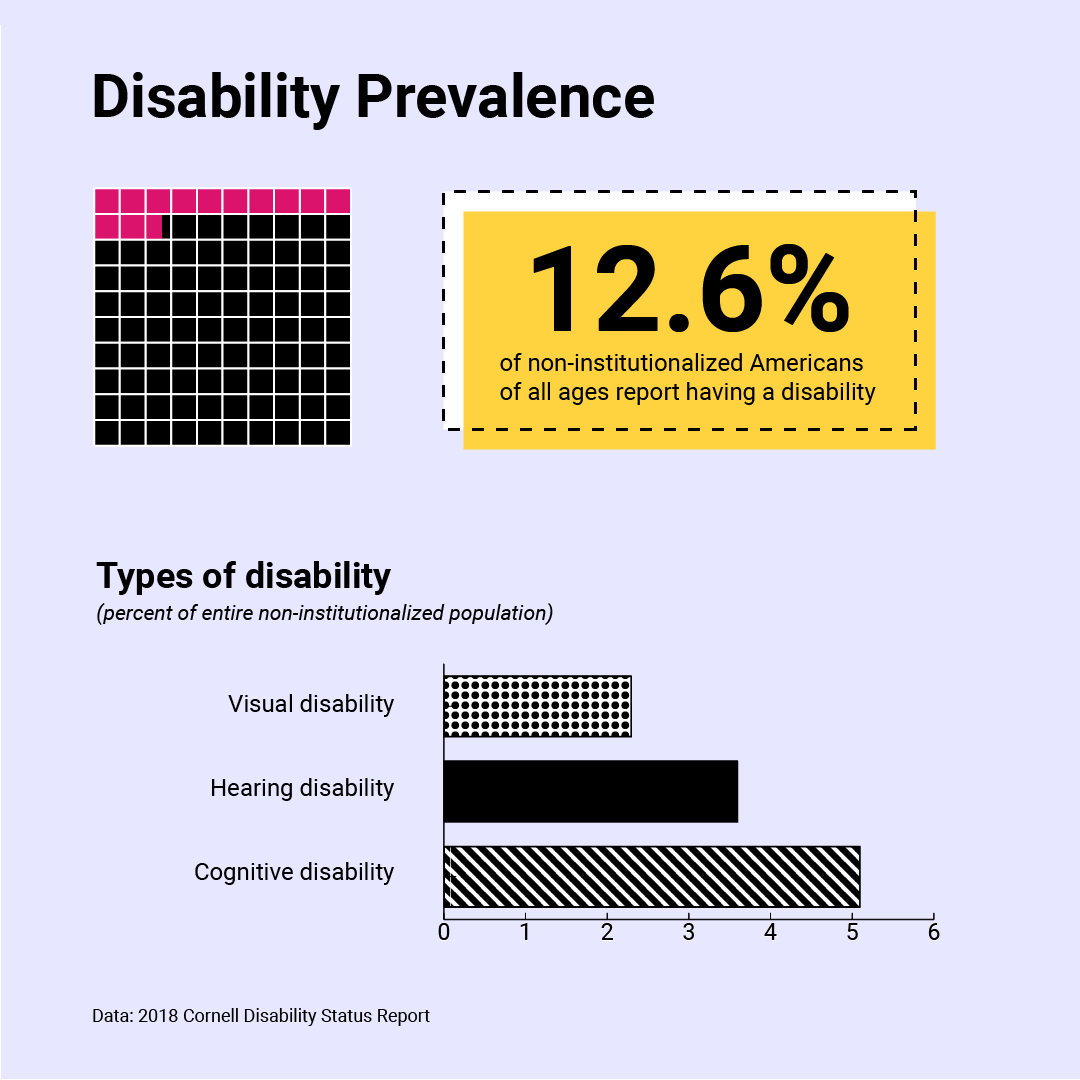Accessibility Infographics
Class project, GDES 420
Objective: Create a series of infographics to highlight key data on web accessibility and its importance.
Deliverables: Infographic series in png format
Process: Researched accessibility issues, found relevant data, conceptualized information design, created decorative illustrations
Tools: Adobe Illustrator

